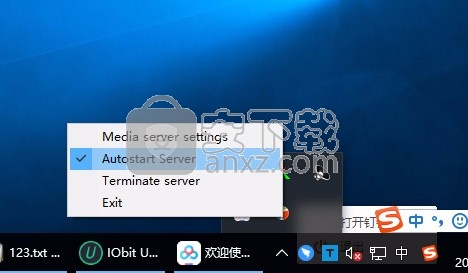
- REMOVE TWONKY SERVER FROM NAS MAC OS
- REMOVE TWONKY SERVER FROM NAS FULL
- REMOVE TWONKY SERVER FROM NAS PRO
- REMOVE TWONKY SERVER FROM NAS WINDOWS
When you add a source, you will be able to browse to any available NFS shares or UPnP devices. (Recall that the maximum allowed bit-rate for a 4K blu-ray is 128Mb/s). Some rough benchmarks I did just now gave me the following read speeds. As an indication of the difference, has done some comparison between using Kodi’s built-in clients and using operating system clients: If you have a media server already you can connect to it using SMB, NFS or UPnP from the Kodi GUI but you may not get the best performance that way. You can also share the same files with two different protocols at the same time.
REMOVE TWONKY SERVER FROM NAS WINDOWS
It stands to reason though to expect a Windows filesystem to be served best with a Windows filesharing protocol and a Linux filesystem to be served best with a Linux protocol. File ownership and permissions won’t necessarily translate but that won’t matter for media files. Note that any filesystem format can be used with any protocol, for example you can share NTFS files using NFS or Linux (ext4) files using SMB. Some media servers may offer only UPnP for sharing. We do not generally recommend the use of UPnP for security and performance reasons, but if you already have a UPnP/DLNA server it should be the easiest of all to set up. See here: Add NFS server capabilities to Windows (free). If you really don’t want to use SMB on Windows, there are NFS servers available. See also SMB1 Product Clearinghouse - Microsoft Community Hub If your NAS or other device where you store media supports only SMB version 1 you may have to adjust the SMB version in Kodi (see below). The Samba client is included in OSMC, the Samba server is optional. They can’t join a ‘HomeGroup’ but according to this: they can access shares created using a homegroup. Linux machines connect to SMB shares using a package called Samba. SMB is built in to every version of Windows. If you keep your media on a Windows machine then it makes sense to use the SMB protocol, otherwise known as CIFS, especially if you have other Windows machines on the network.

Windows (but not ‘Home’ versions) also has an NFS client so you can still access those NAS files from Windows. NFS is the built-in network filesharing system in Linux.
REMOVE TWONKY SERVER FROM NAS MAC OS
It was easy to enable all of the sharing protocols and to then access the shares from Mac OS X, Windows, and Linux.If you have a NAS that offers the NFS filesharing protocol, choose that for best performance with OSMC devices. Really using a NAS requires that you mount the drive to your computer using NFS (for Linux and other Unix type OS), AFP (for Macs), or SMB (for Windows machines). FTP is similar in that you can fetch or upload files. The web file manager is a simple way to access files via a web browser and to quickly grab a single file, but it is too rudimentary to really manage your NAS.

The TS-439 provides many ways to access that storage including a web file manager (HTTP), FTP, NFS, SMB, and AFP. The most basic function of the NAS, as the acronym implies, is to provide Network-Attached Storage. The synchronization process took about 9 hours, but, in the mean time, I started experimenting with the NAS. At this point, the NAS was available for reading and writing, but the RAID was still synchronizing so the data was not yet protected. It took about 30 minutes to create the 1.8 TiB filesystem and I was up and running.
REMOVE TWONKY SERVER FROM NAS FULL
I started the out by navigating the friendly Quick Configuration screens and setting up my three working drives as a 1.8 TiB formatted RAID-5 I planned to add the fourth drive later and expand the RAID to the full 2.7 TiB capacity. By default, the TS-439 gets an address via DHCP from the router and reports this address on the front panel making it easy to find with any web browser on your subnet. Since Windows is not my primary environment, I configured the NAS via the web interface. The DOA drive would give me the opportunity to try out the RAID expansion features of the TS-439. After troubleshooting the drive and convincing myself that it was not an issue with the NAS, itself, I had a new drive cross-shipped immediately. It was DOA and would not be recognized by the NAS. Each drive spun up and its light went green, with the exception of one drive.

Four screws fasten each drive into its sled and they slide smoothly into the NAS. The NAS has 4 easy to access and remove aluminum drive sleds. When everything arrived, I was in a hurry to get started. My plan was to set up the NAS with 4 drives running in RAID-5, which provides about 3 TiB of storage while allowing the NAS to survive a single drive failure.
REMOVE TWONKY SERVER FROM NAS PRO
As soon as the QNAP TS-439 Pro NAS shipped, I ordered 4 identical 1 TiB Hitachi Deskstar drives from Newegg.


 0 kommentar(er)
0 kommentar(er)
